The UK might not be the biggest of countries but it definitely punches above its weight in terms of stunning landscapes and breath-taking scenery. As you can see from the UK National Parks map the parks are located across England, Wales and Scotland. Each park has its own character, unique features and beautiful landscapes that’ll have you pulling on your boots and heading for the hills.
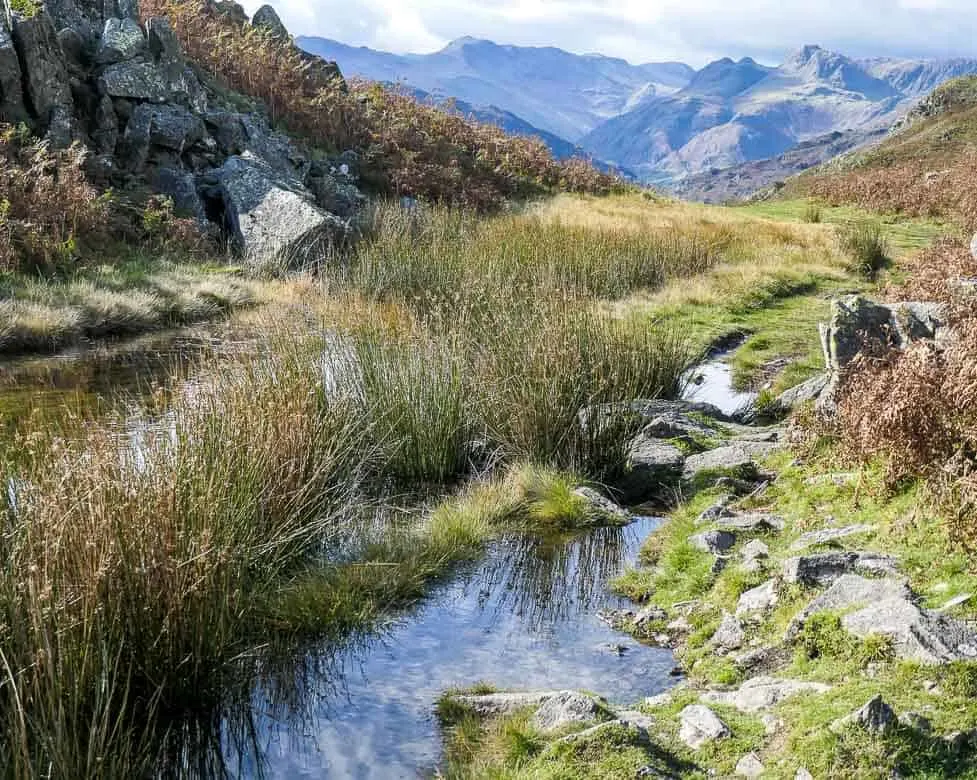 Loughrigg Fell, Lake District
Loughrigg Fell, Lake District
This post may contain compensated links. Find more info in my disclaimer.
UK National Parks
Contents
If you’re a lover of the outdoors, fresh air and beautiful scenery then read on to discover what to see and do in all of Britain’s National Parks. You’ll find plenty of inspiration for your UK staycation or holiday and this list of National Parks in the UK should help you decide which is the best one for you to visit. Check my National Parks map for the park nearest to you.
The parks are some of the best places for getting a blast of nature and enjoying outdoor activities. Because we have so many parks, you’re never far away from a new adventure or a breath of fresh air.
From the mountain vistas of Snowdonia and the landscapes of the Cairngorms in Scotland to the coastal views and white cliffs of England’s south coast, there’s a park, a view, and a hike to suit every outdoor adventurer right across the UK. I’ve made it my mission to visit each and every one. But first….
What is a National Park?
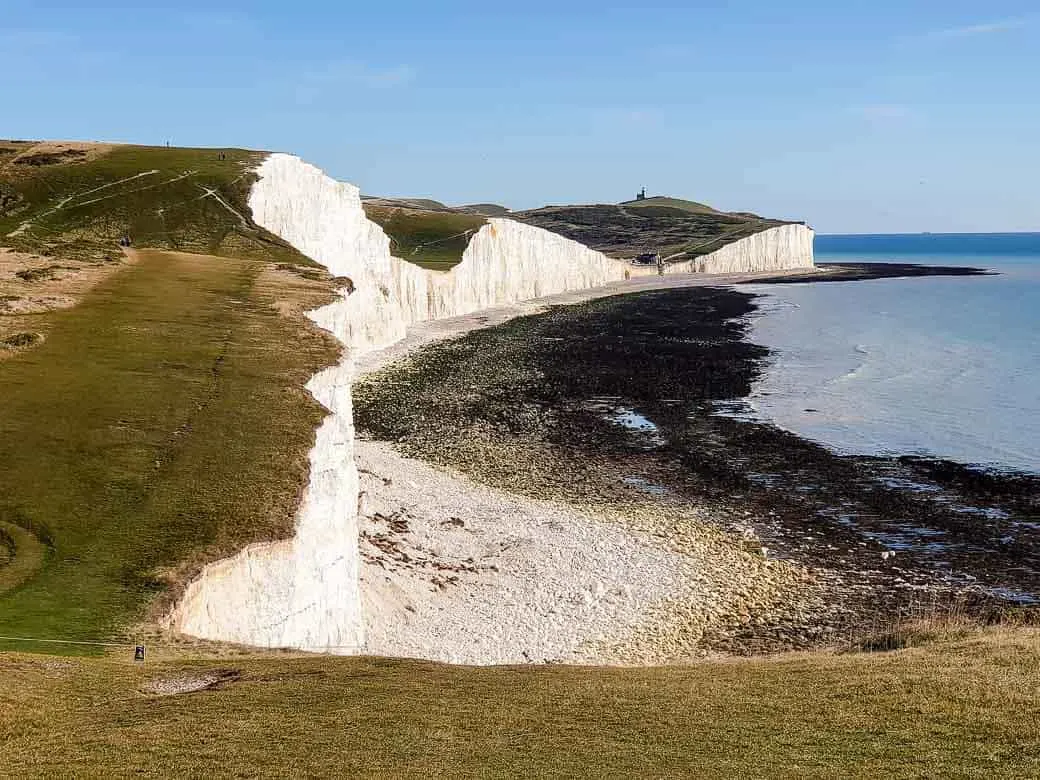 South Downs National Park – Seven Sisters Cliffs, East Sussex
South Downs National Park – Seven Sisters Cliffs, East Sussex
Each of the UK’s Parks are protected regions due to their natural beauty, wildlife and cultural heritage. Unique qualities include history, archaeology, geography and geology as well as the rare species that live within them. Then there’s the history, heritage and traditions of the people who live in and around the national parks.
The aim of the National Park network is to ensure that wildlife and nature are protected so that people can benefit from them and, at the same time, preserve them.
Buy OS maps for all devices for Great Britain or Ordnance Survey Explorer Paper Maps
How many National Parks in the UK?
There are currently 15 Parks in the U.K. England is home to ten, there are three in Wales and two in Scotland. Northern Ireland has none to date but it does have some wonderful scenery, think Giant’s Causeway, which is definitely worth a visit.
UK National Parks List
National Parks in England
England’s National Parks are: Dartmoor, Peak District and the Lake District – these are the first UK parks and all were created in 1951. North York Moors followed in 1952 and then Exmoor and Yorkshire Dales in 1954. In 1956 Northumberland was created and then the Broads in 1989.
The two newest English National Parks are New Forest which was established in 2005 and finally South Downs, my nearest National Park, which was established in 2011.
National Parks in Wales
Snowdonia, established in 1951, was amongst the first of the UK’s National Parks followed by Pembrokeshire Coast the following year and Brecon Beacons in 1957.
National Parks in Scotland
The two Scottish National Parks are amongst the newest in the UK. Loch Lomond and The Trossachs National Park was created in 2002 and the Cairngorms National Park in 2003.
UK National Parks Map
This map of the National Parks in the UK should give you an idea of the nearest National Park to you. As you can see they’re fairly well spread around the country.
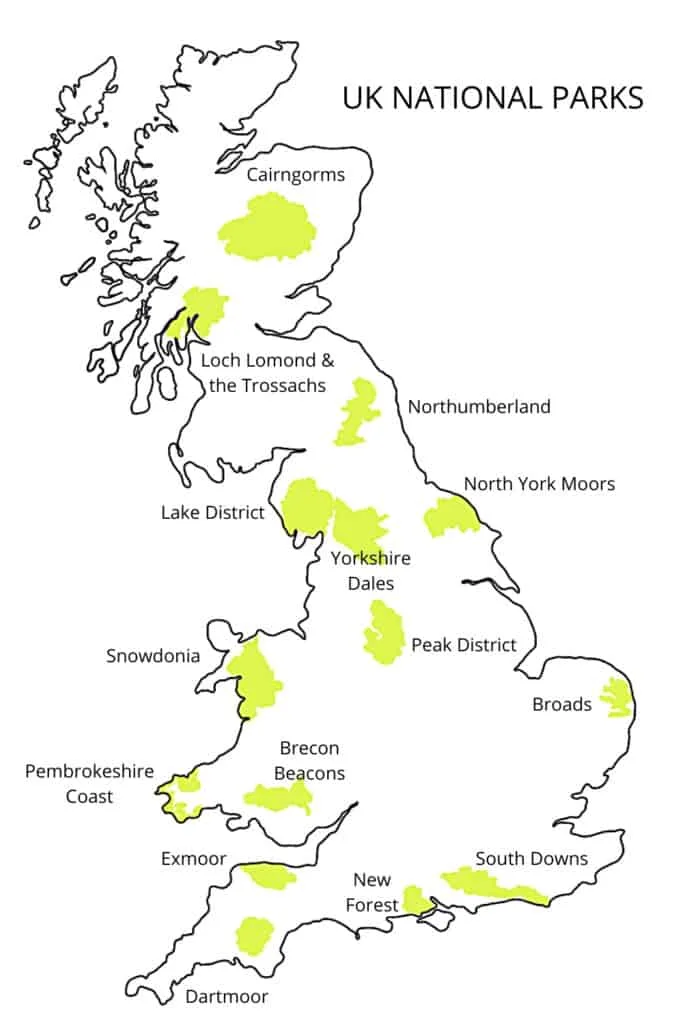 Map of the UKs National Parks
Map of the UKs National Parks
Buy OS maps for all devices for Great Britain or Ordnance Survey Explorer Paper Maps
I’ve not visited all of the parks in the UK (but they’re on the list!) so I’ve enlisted the help of some travel writers to give you the low down on what to expect and some top tips for your visit.
We’ll start in Wales before heading to Scotland and then work our way down through England stopping off at each park en-route. We’ll end at the newest UK National Park, South Downs.
National Parks in Wales
Brecon Beacons National Park
Contributed by Angela from Where Angie Wanders
![]() Brecon Beacons – List of UK National Parks
Brecon Beacons – List of UK National Parks
The Brecon Beacons in south Wales is undoubtedly one of the most beautiful of the UK’s National Parks. It covers over 519 sq. miles of unspoilt countryside and is a magical place to escape to for a taste of the great outdoors. Offering gentle walks, cascading waterfalls, mountain hikes and traditional Welsh villages to explore, it makes for a perfect 3-night weekend break in Wales.
Buy OS maps for all devices for Great Britain or Ordnance Survey Explorer Paper Maps
Check rates and availability for accommodation in the Brecon Beacons.
Pembrokeshire Coast
Contributed by Suzanne from Meandering Wild
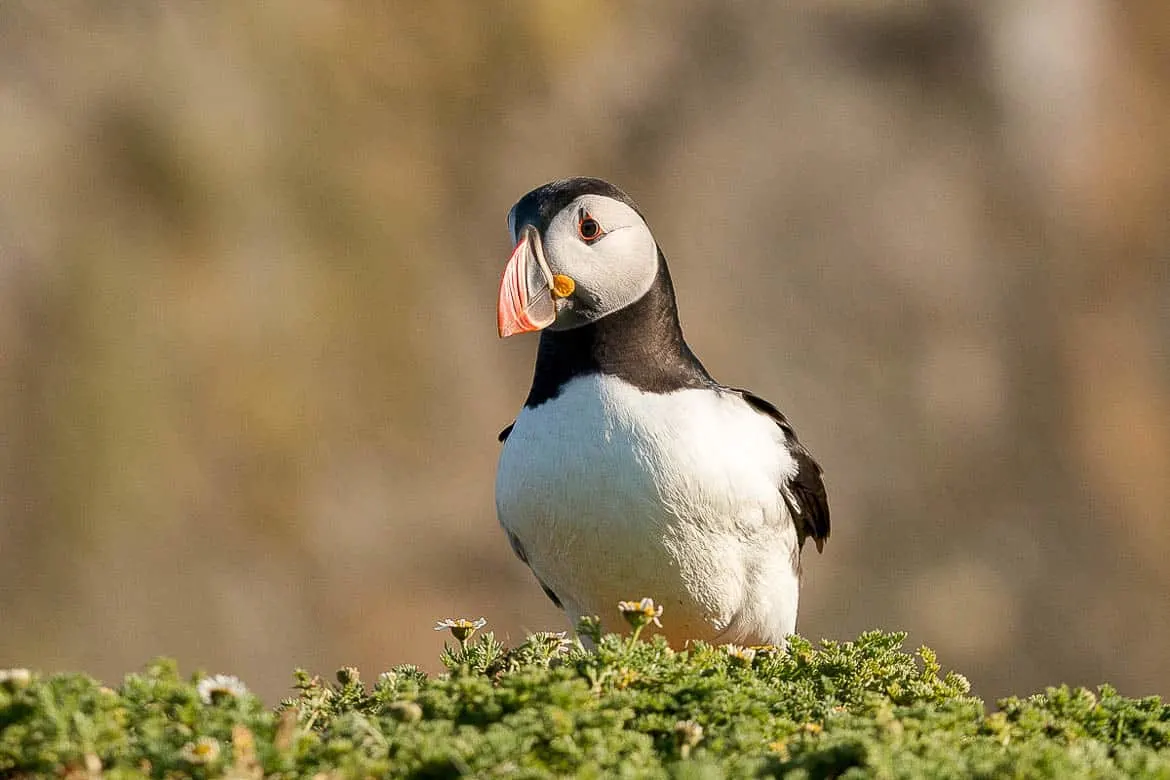 Puffin on Skomer Island, Pembrokeshire National Park
Puffin on Skomer Island, Pembrokeshire National Park
Pembrokeshire Coast National Park is located in the south west corner of Wales. It is made up of beautiful coastline with sandy beaches, small islands and surrounding countryside with woodlands, estuaries and valleys. It is one of the smallest national parks in the UK and is split into four parts. The national park is an odd shape and at its widest point is just 16km wide and at its narrowest it is 100m.
The park includes the seaside town of Tenby and St David’s, the smallest city in the UK, with its beautiful cathedral. Also within the national park is Carew Castle and the Tidal Mill as well as the remains of Castell Henllys Iron Age Village.
The Pembrokeshire Coast Path follows 186 miles of the coast through the National Park and visits some spectacular and remote coves and beaches. The offshore islands are also unique with Caldey Island close to Tenby being maintained by monks, and Grassholm having one of the largest gannet colonies in the world.
Seabirds and sealife are the main wildlife to be seen in this area and every beach will provide the chance to see the seals hauled out or seabirds nesting on the steep cliffs.
The one place not to be missed is Skomer Island. This small island is a few miles from Martins Haven and in the summer months is home to thousands of puffins. The puffins on Skomer Island nest in the sandy cliff tops. Taking a boat to the island is a unique experience and allows you to see these comical birds up close.
The area needs at least 5 days to explore properly and given its location and distance from any motorways it is worth spending time in the area once you arrive.
Check rates and availability for accommodation in Pembrokeshire
Snowdonia
Contributed by Suzanne from The Travelbunny
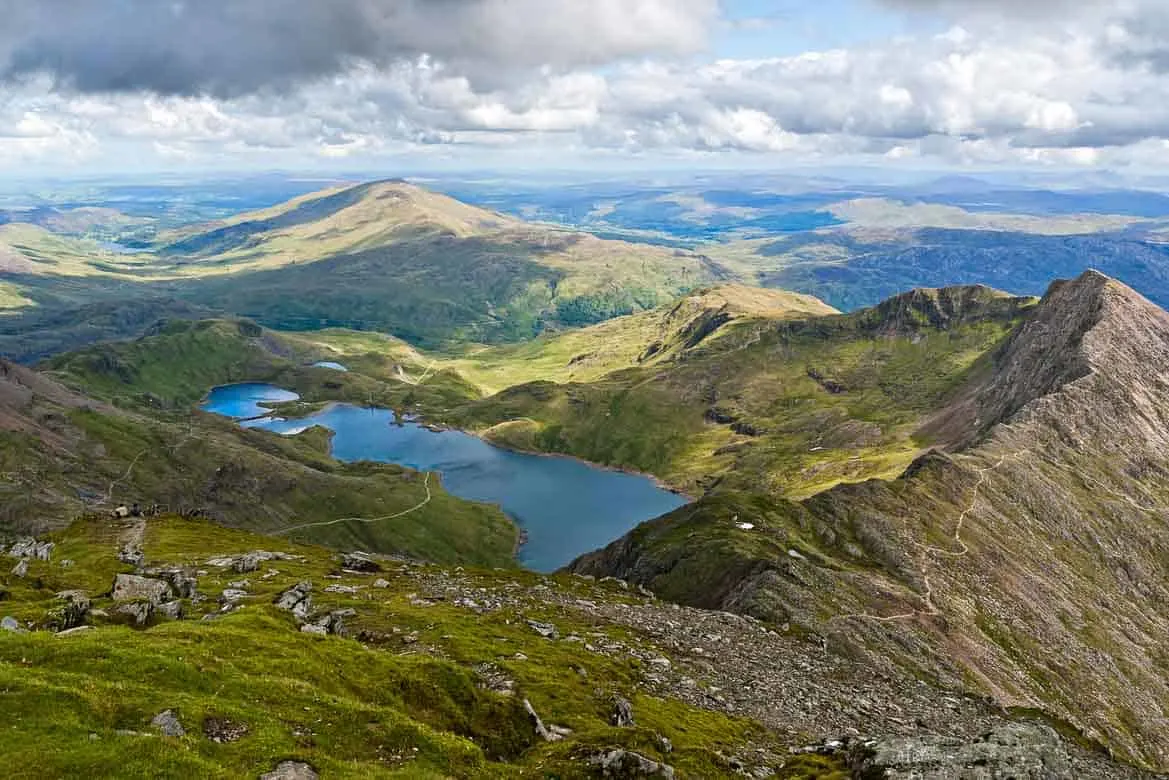
Situated on the west coast of the UK in north Wales, Snowdonia is the largest National Park in Wales covering 823 square miles of outstanding natural beauty and diverse landscapes. It’s also home to the highest mountain in England and Wales – Yr Wyddfa (Snowdon). Mount Snowdon stands at 1085m and offers views over Snowdonia, Anglesey, Pembrokeshire and Ireland on a clear day.
As well as nine mountain ranges you’ll fifteen peaks over 3000 feet, lakes, picturesque villages, gushing waterfalls and 23 miles of stunning coastline and sandy beaches.
Buy OS maps for all devices for Great Britain or Ordnance Survey Explorer Paper Maps
Known as the adventure capital of the UK, Snowdonia offers gorge walking, and surfing as well as activities such as hiking, cycling and white water rafting.
If you are looking for a slower pace of activity, hop board the steam or diesel trains on the Snowdon Mountain narrow guage railway and Ffestiniog and Welsh Highland Narrow Gauge Railways. There are many castles found in Snowdonia including Conwy and Harlech Castles and the remains of Tomen y Mur Roman fort.
The wildlife seems to like Snowdonia too so keep an eye out for buzzards, peregrines, merlins, goshawks and black grouse. The lesser horseshoe bat and pine marten can also be found here.
Check rates and availability for accommodation in Snowdonia
National Parks in Scotland
Cairngorms
Contributed by Victoria from Guide Your Travel
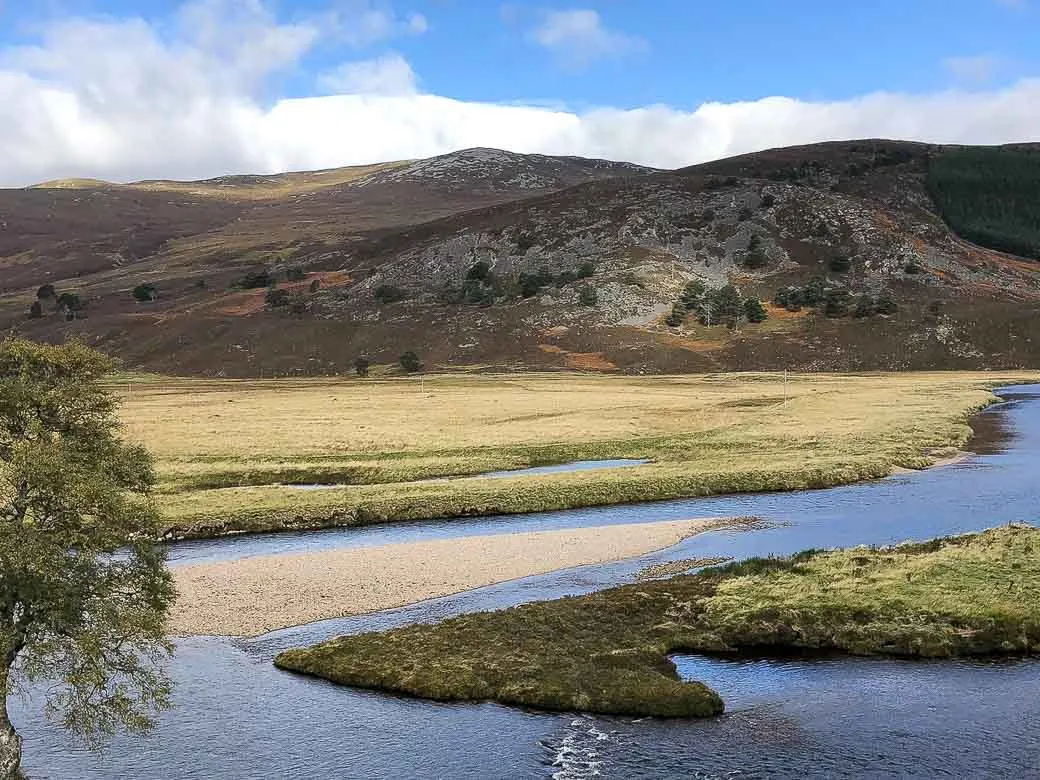 Cairngorms National Park, Scotland
Cairngorms National Park, Scotland
The Cairngorms are an incredible national park located in the highlands of Scotland. They’re known for their stunning mountain ranges and beautiful scenery.
The Cairngorms are perfect for hiking and exploring although the weather can be quite cold and rainy. Definitely try visiting during the summer months between June and August for the best chances for good weather. In the winter, you can still visit, however, be aware that there might be quite a lot of snow so bring the appropriate clothing and gear.
Buy OS maps for all devices for Great Britain or Ordnance Survey Explorer Paper Maps
If you have a car, it’s highly recommended to stay in Aberdeen or close by. This is the closest larger city so this is where you’ll find the best selection of hotels.
You can easily see some of the Cairngorms in one day but spending at least a weekend or even a few more days here is definitely a great option to truly get to know the area.
The Cairngorms are home to a quarter of endangered species in the UK. If you enjoy bird watching this is a fantastic place to visit. In addition to incredible nature, the Cairngorms are also home to historic sites and castles. Braemar Castle is one of the best to visit and should definitely be at the top of your list.
Check rates and availability for accommodation in the Cairngorms
Loch Lomond and the Trossachs
Contributed by Eniko Travelhacker Girl
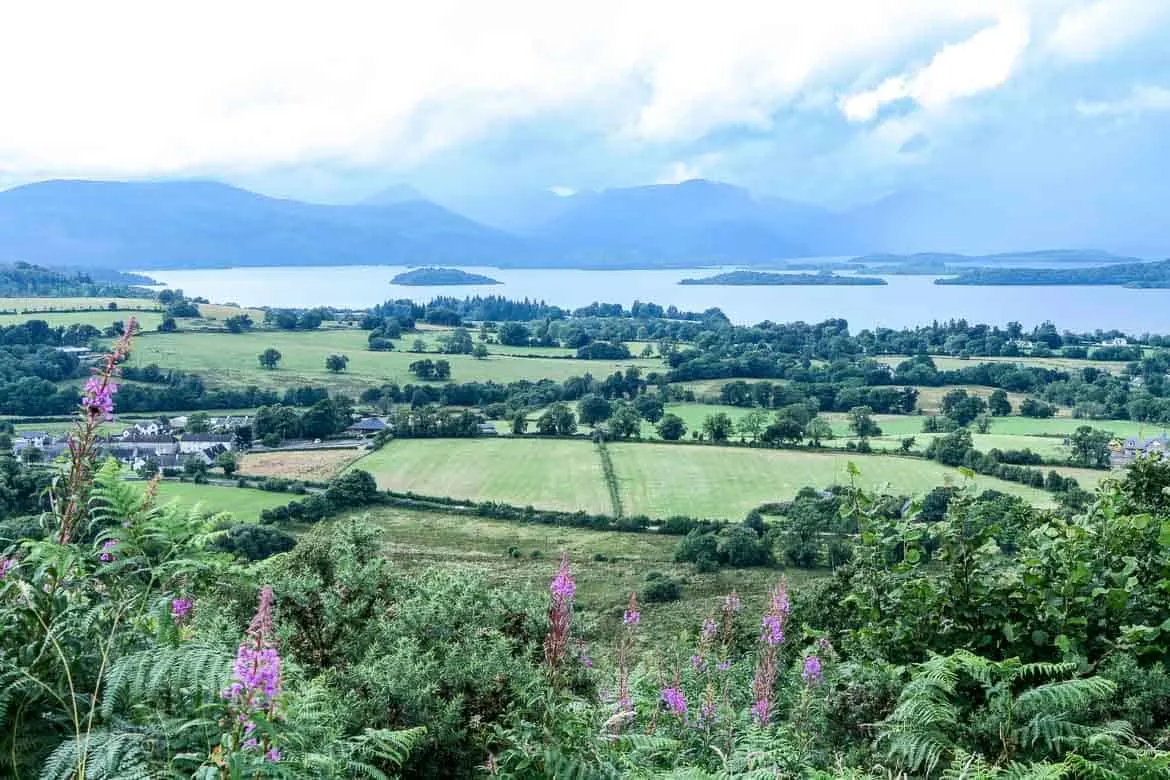 Loch Lomond and the Trossachs National Park
Loch Lomond and the Trossachs National Park
Loch Lomond & the Trossachs are the perfect place to explore for outdoor lovers. You could easily spend a whole week in the area, as there are so many things to do in Loch Lomond.
Balloch is a great base to discover what the national park has to offer. If you like camping, then Lomond Woods Holiday Campsites has clean facilities and a playground as well. It is conveniently located to visit all the attractions in Balloch. Don’t miss The Queen of the Loch pub for a delicious Sunday roast. For water sport lovers the town offers kayak and canoe rental. Paddling on the loch is a really peaceful experience. Ospreys, eider ducks, gannets and black grouse are often spotted.
Buy OS maps for all devices for Great Britain or Ordnance Survey Explorer Paper Maps
If you prefer to explore the land, then cycling is a good way to do this as there are many safe, scenic bike trails around. Hikers can choose from several different paths as well. An easy, but really scenic hike is up Duncryne hill. You can reach the top in 15 minutes and despite it being a small hill, it has a really impressive view to the loch with its little islands and the surrounding mountains. For a more challenging hike, try The Cobbler Arrochar.
On a rainy day, the Loch Lomond Bird of Prey Centre or the Loch Lomond Sea Life Aquarium will provide a few hours of entertainment. Adventure seekers and families with older children will enjoy a visit to the TreeZone, where you can try zip lines, high ropes and climbing walls.
Check rates and availability for accommodation in Loch Lomond and the Trossachs
National Parks in England
Northumberland
Contributed by Claire at Tales of a Backpacker
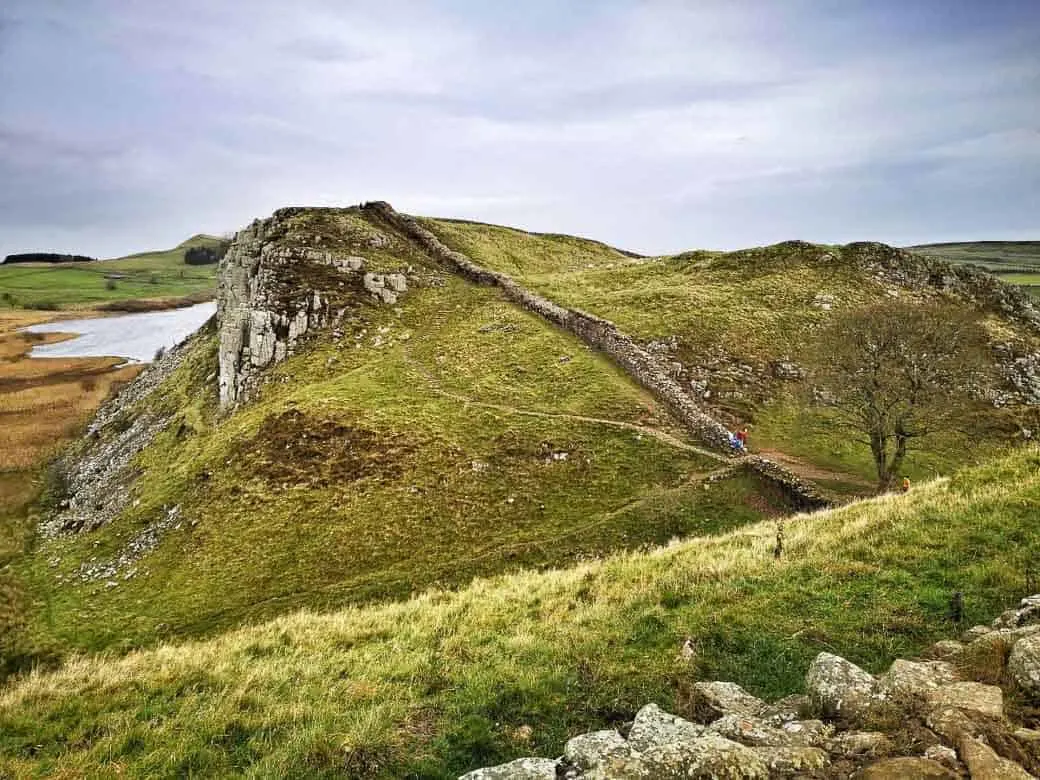 Hadrian’s Wall, Northumberland
Hadrian’s Wall, Northumberland
Northumberland National Park covers about a quarter of the county of Northumberland in northeast England. It is the most northerly national park in England and borders Scotland. The park includes the Cheviot Hills, Kielder Forest and a large portion of Hadrian’s Wall, which was built to defend the Roman Empire from unconquered Caledonia, which we now know as Scotland.
Hadrian’s Wall is a UNESCO World Heritage Site and is not to be missed. You can visit various sections of the wall, and do at least part of the Hadrian’s Wall walk following the footpath which runs alongside the wall. There are also several forts and museums to visit as well, the best preserved being Housesteads Fort.
Kielder Forest is in the northern part of the National Park and is the largest planted forest in Northern Europe. Most of the trees here were planted just after World War II when the country needed a reliable source of fast-growing wood. These days, timber is still an important business for the forest, but it is carefully managed to encourage wildlife and biodiversity. As well as the Sitka Spruce trees which were planted after the war, there is now a mix of native trees as well. Ospreys nest here in the summer and feed in Kielder Reservoir. You may also spot red squirrels and roe deer here too.
Buy OS maps for all devices for Great Britain or Ordnance Survey Explorer Paper Maps
Popular activities in the National Park include hiking and mountain biking in the Cheviot Hills or walking along Hadrian’s Wall, fishing and boating on the reservoir and star gazing. Parts of the National Park, including some of Kielder Forest around Kielder Observatory, are designated as a Dark Sky Reserve, so there is very little light pollution.
You could take a day trip to the National Park from Newcastle or Alnwick, but spending the night here means you can take your time. There are a few options for accommodation in the town of Bellingham, including a campsite, and there is a new YHA hostel at The Sill close to Hadrian’s Wall which is popular for walkers.
Check rates and availability for accommodation in Northumberland
Lake District
Contributed by Suzanne from the Travelbunny
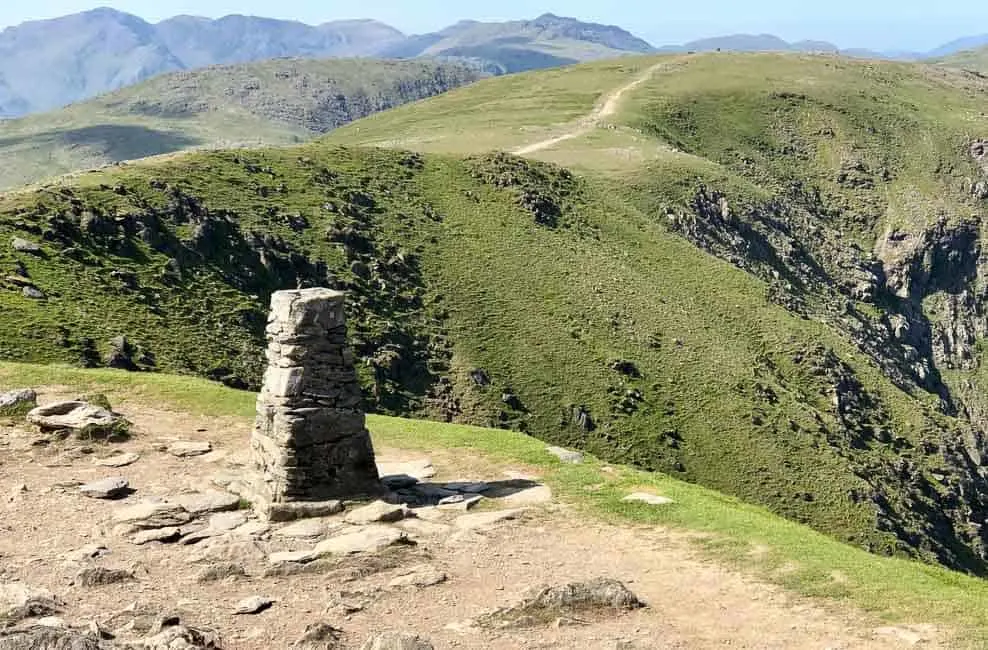 Trig point Old Man Coniston, Lake District
Trig point Old Man Coniston, Lake District
The Lake District is the UKs largest National Park, located in Cumbria in the northwest of England. It’s a UNESCO World Heritage Site and one of my favourite National Parks in the world. Not least for the amazing landscapes, mountains, waterfalls and the16 lakes within it. I’m not alone, more than 19 million people visit the Lake District each year.
You’ll find an abundance of lakes, tarns and mountains in the Lake District, including England’s highest mountain and its deepest lake. There are quaint towns and villages and some of the England’s best hikes and viewpoints. The Lake District also has a literary history and was home to poet William Wordsworth and children’s author Beatrix Potter.
Buy OS maps for all devices for Great Britain or Ordnance Survey Explorer Paper Maps
The Lake District is the perfect hub for adventure activities including the Via Ferrata Extreme at Honister Slate Mine, hiking, scrambling, ghyll walking, rock climbing and kayaking. That’s just for starters. Serious hikers should climb Scafell Pike, England’s highest mountain and, for beginners, Loughrigg Fell will get your boots bedded in.
Wildlife lovers should look out for red squirrels along with red deer and roe deer and otters. For bird lovers, Osprey, Red Kites and Peregrine Falcons also inhabit the area. Look out for the local distinctive breed of sheep. Herdwick sheep, known locally as Herdys roam the fells and hillsides.
Towns and villages worth exploring in the South Lakes are Ambleside – look out for the bridge house on the river, Grasmere with its delicious gingerbread and Bowness-on-Windermere. Ambleside is also a good base to stay with plenty of decent restaurants, pubs and accommodation. There are also heaps of outdoor shops if you need hiking and walking gear. Don’t miss a boat trip on Lake Windemere.
You’ll never have enough time in the Lake District as it covers 912 square miles. Do what we do and visit for a week every couple of years and explore this fabulous National Park bit by bit.
Check rates and availability for accommodation in the Lake District
Yorkshire Dales
Contributed by Sinead at Map Made Memories
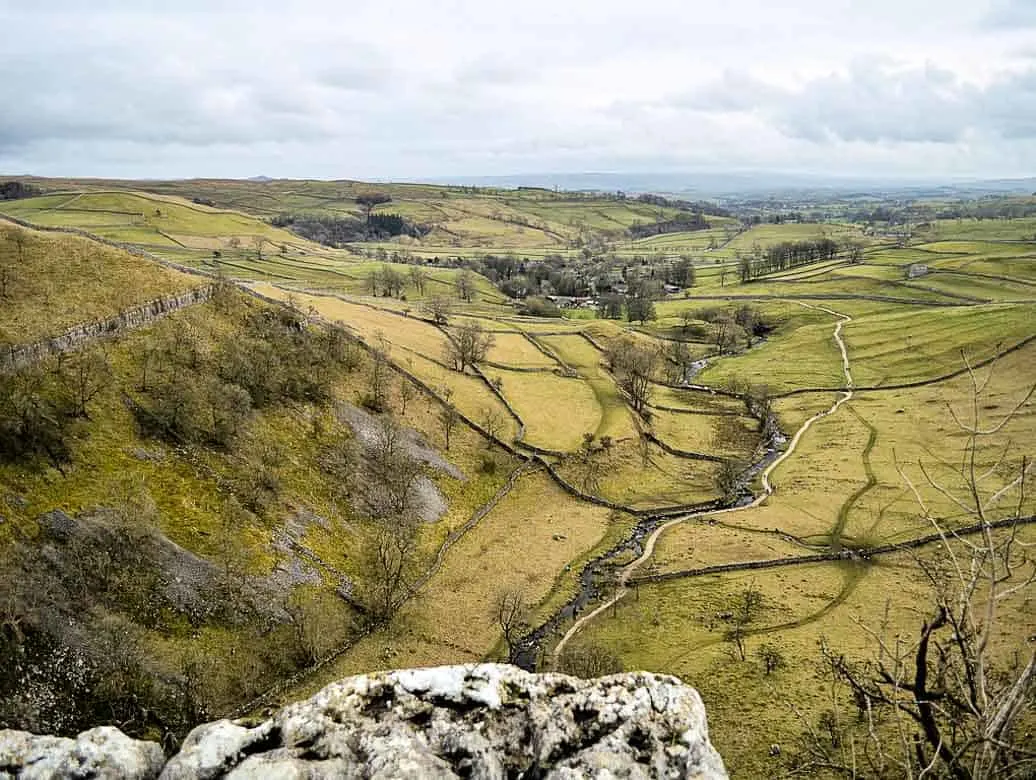 Yorkshire Dales National Park
Yorkshire Dales National Park
Buy OS maps for all devices for Great Britain or Ordnance Survey Explorer Paper Maps
Check rates and availability for accommodation in the Yorkshire Dales
North York Moors
Contributed by Karen from Lavender and Lovage
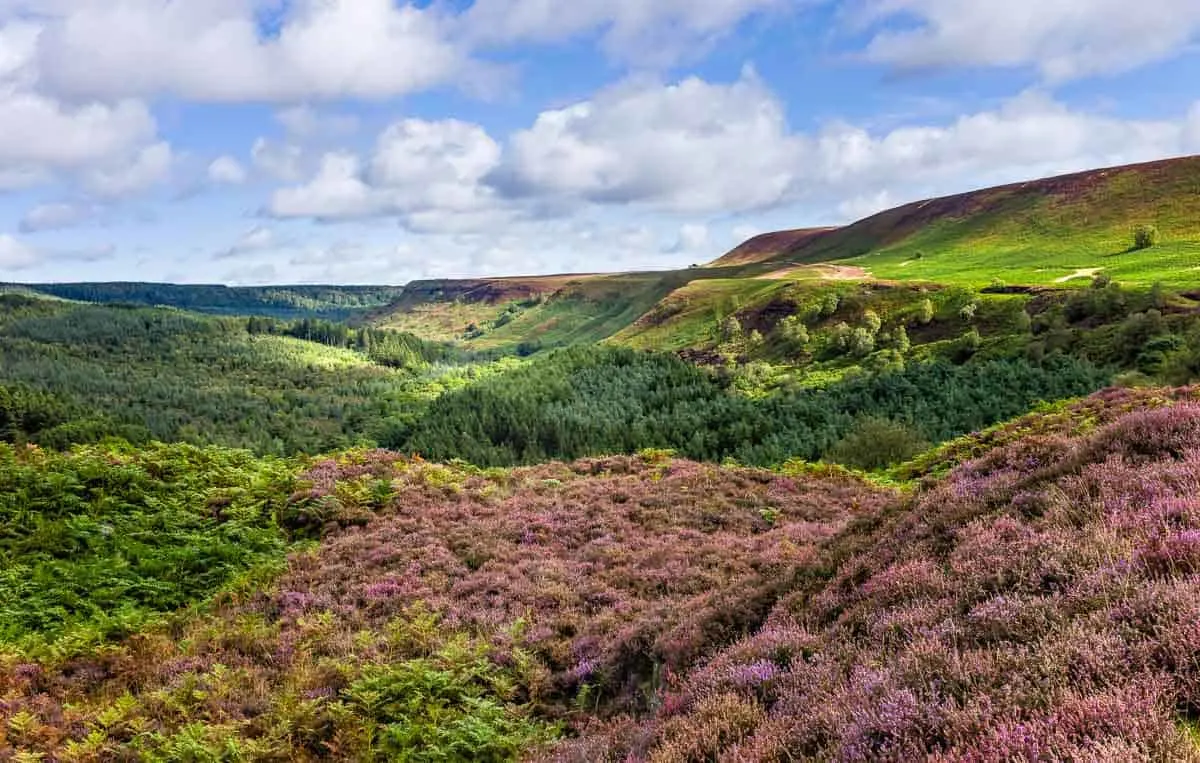 North York Moors National Park, North Yorkshire
North York Moors National Park, North Yorkshire
The North York Moors National Park is situated in North Yorkshire, and spans the coast and moorland from Pickering in the south to the coastal town of Whitby in the north.
As well as the moors, from which the park derives its name, there are forests, ancient woodland, rivers, rolling dales and pretty market towns within the park. It covers an area of 554 square miles (1,436 square kilometres) and has 26 miles of coastline. There are 1,408 miles (2,268km) of Public Rights of Way in the National Park, and the 109 mile (176km) Cleveland Way National Trail forms a horseshoe around the North York Moors starting in Helmsley and finishing in Filey.
Buy OS maps for all devices for Great Britain or Ordnance Survey Explorer Paper Maps
Places of interest include the world famous town of Goathland, where the popular television series Heartbeat was filmed. Other towns and villages worth visiting are Malton, which is now a vibrant food centre, as well as the picturesque moorland village of Hutton-Le-Hole, where you will probably be sharing your picnic spot by a tinkling stream with the local sheep. The coastal town of Whitby is famous for its links with Dracula, as it’s said that Bram Stoker gained inspiration for ‘Dracula’ after staying in Whitby in 1890.
There are many activities to do within the North York Moors National Park, including taking a nostalgic steam train ride on the North York Moors Railway. There are a myriad of outdoor activities you can enjoy; go for a country stroll, surf the waves, climb a cliff, catch a fish, go for a ride, and you can even take to the skies in a glider.
From wild moorland birds to minke whales, there is a wealth of wildlife waiting to be discovered. Seal and whale spotting trips are perennially popular, as is bird watching – you may, if you are lucky, get to see an osprey or a moorland curlew. There are also pine marten colonies in some of the wooded areas in the park. Coastal birds include puffins, gannets and guillemots. Join a gannet and puffin cruise on the Yorkshire Belle on weekends between May to July.
The North York Moors National Park is a stargazer’s paradise, with some of the best dark skies in the country. It’s all about discovering, learning and enjoying the dark and the stars you can see as a result, with events throughout the year, suitable for all ages. The Dark Skies Fringe Festival, held in October, is extremely popular.
Although you could enjoy many of the activities mentioned above over a weekend, to really take advantage of all that the park has to offer, a week’s stay will give you more opportunities to see all the park, and to enjoy outdoors, as well as museums, castles and of course the amazing food scene. The best times of the year to stay are early spring, late summer and autumn, when the park tends to be less crowded.
There are many wonderful places to stay in and around the park, with numerous B&B’s offering great value. If you fancy staying in an old manor, then The Old Lodge in Malton, the food capital of Yorkshire, makes a cosy and comfortable base, with great food.
As well as hotels, B&B’s and self-catering, there is also a great selection of glamping sites in and around the park. When it comes to eating out, the area has a plethora of amazing places, from artisan bakeries, tea rooms, traditional pubs and fine dining to seafood, farm shops, delis and tea gardens. The park REALLY is a mecca of fabulous locally sourced food and drink.
Check rates and availability for accommodation in the North York Moors
Peak District
Contributed by Pauline from BeeLoved City
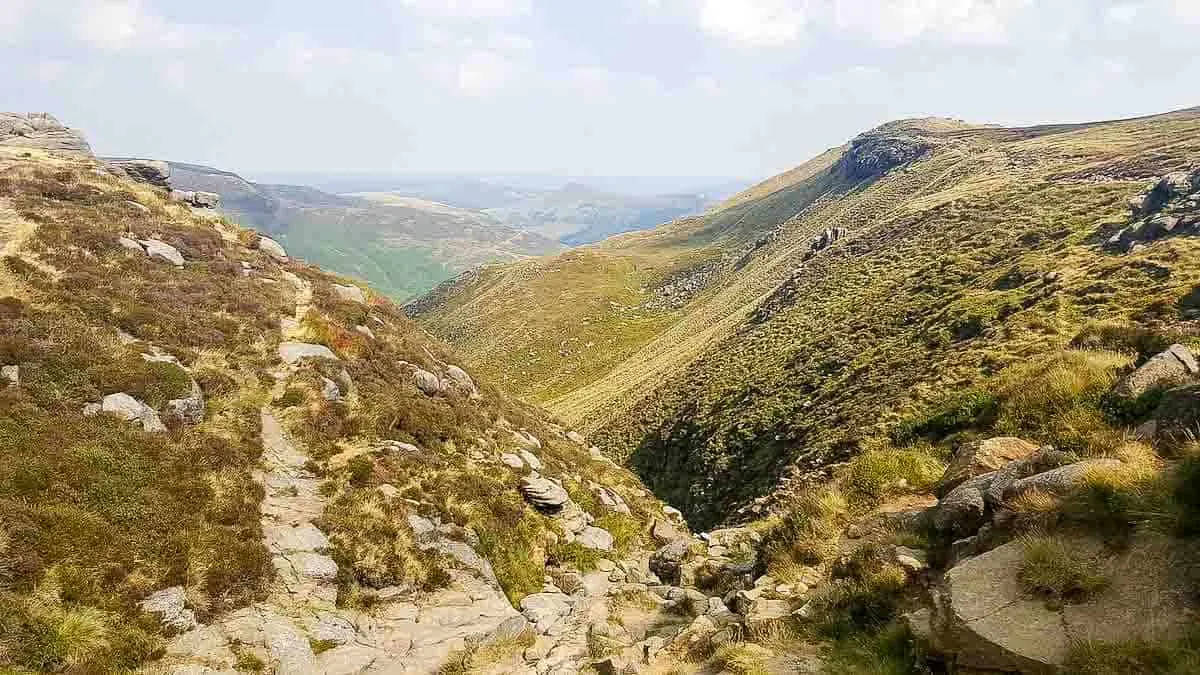 Kinder Scout, Peak District – The UK’s first national park
Kinder Scout, Peak District – The UK’s first national park
Buy OS maps for all devices for Great Britain or Ordnance Survey Explorer Paper Maps
Check rates and availability for accommodation in the Peak District
Broads
Contributed by Anisa from Norfolk Local Guide
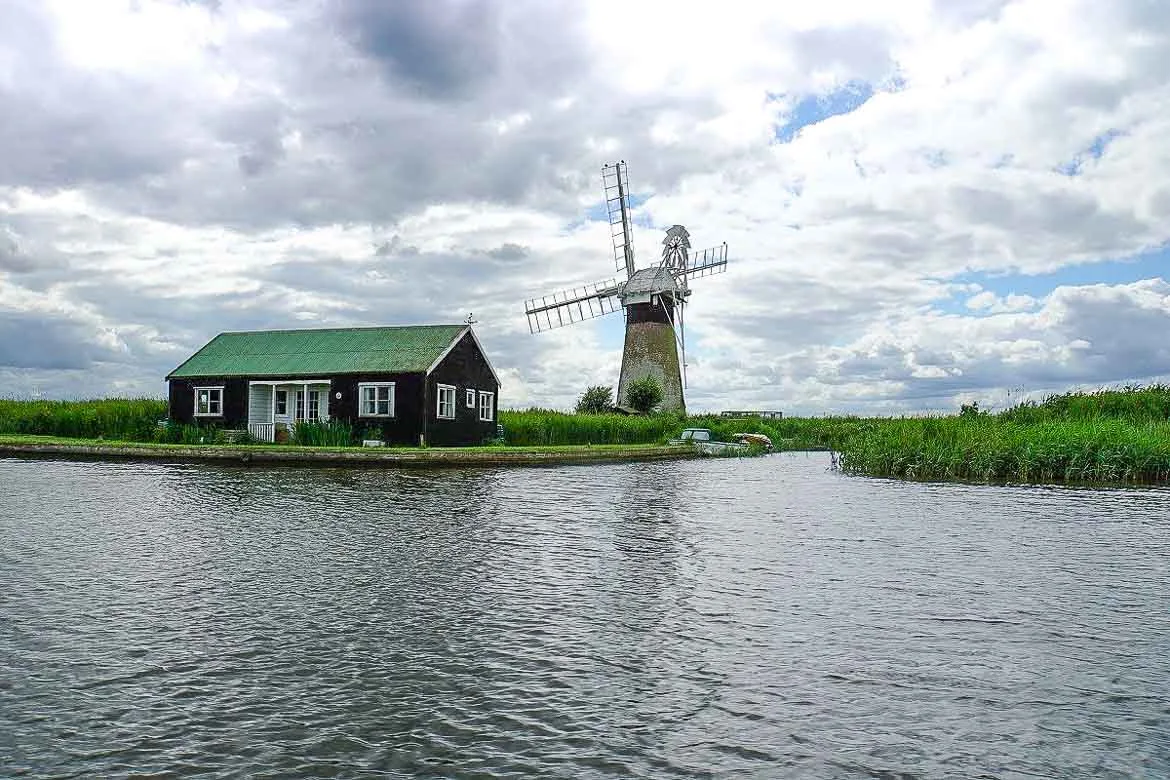 The Broads National Park, Norfolk
The Broads National Park, Norfolk
Buy OS maps for all devices for Great Britain or Ordnance Survey Explorer Paper Maps
Check rates and availability for accommodation in the Broads
Exmoor
Contributed by Kat from Wandering Bird
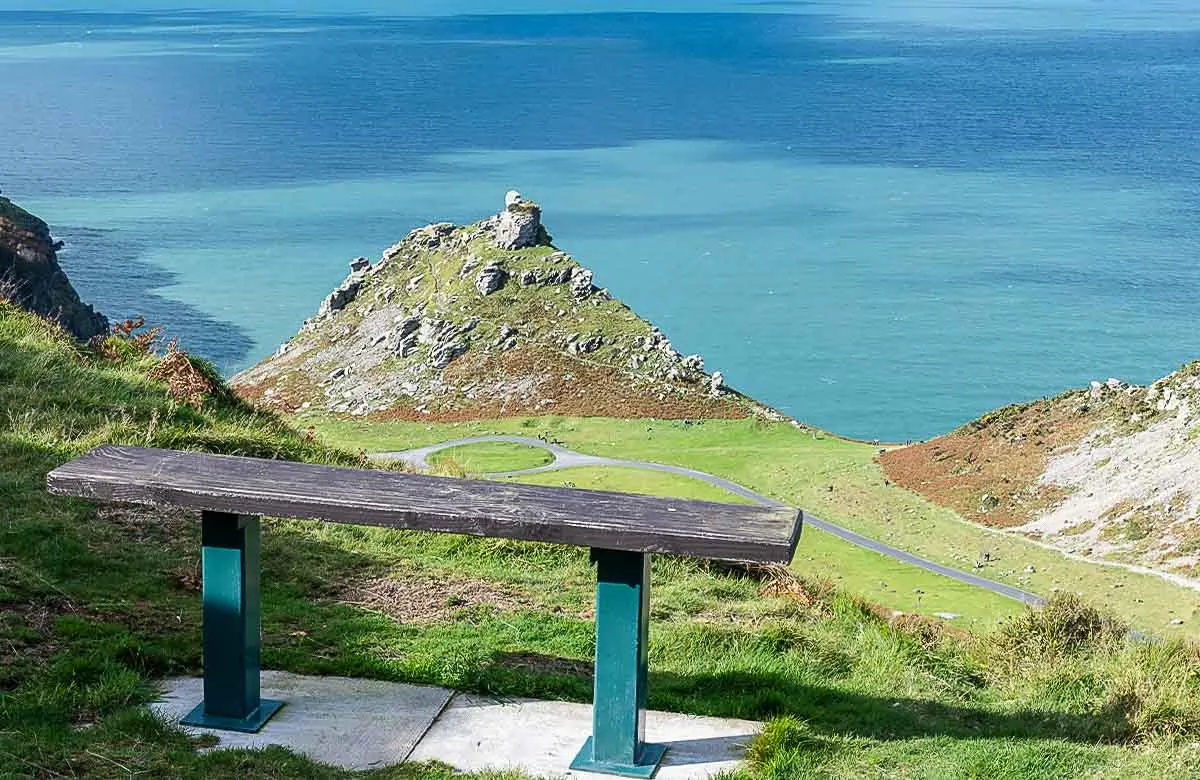 Exmoor National Park
Exmoor National Park
If you’re looking for a wonderful mix of wild countryside, incredible views and wild ponies, head to Broads National Park
Straddling the border between Somerset and North Devon, Exmoor National Park is famous for being one of the best walking and hiking destinations in the UK, with over 1000 kms of routes for all ages and abilities to choose from.
It’s also famous for the contrasting scenery, with miles of open moorland leading into rolling hills and rocky outcrops down to the beaches. Once a royal forest and hunting ground, now the wildlife is encouraged to thrive and you’ll see hundreds of birds and animals, including many of the wild ponies which wander the moor.
Buy OS maps for all devices for Great Britain or Ordnance Survey Explorer Paper Maps
Some of the best places to visit on Exmoor include the picturesque coastal settlements of Lynton and Lynmouth- don’t miss the chance to ride the funicular railway up the cliff!
Next, head to Watersmeet for a walk in its gorge (and don’t miss a slice of delicious cake in the National Trust tea shop near the river.)
For wilder walks, head up to the northern edge of Exmoor and visit the Valley of Rocks – a slightly more arduous walk/ scramble but with incredible sea views.
Exmoor is a perfect camping or UK motorhoming holiday destination as there are so many great campsites around the area- allowing you to explore at your leisure. There are also countless B&Bs and hotels to choose from.
If you have time, you can easily fill a week or two with things to do, but it’s also a wonderful place to escape for a long weekend to get away from it all.
Check rates and availability for accommodation in Exmoor
Dartmoor
Contributed by Sarah from TammyMum
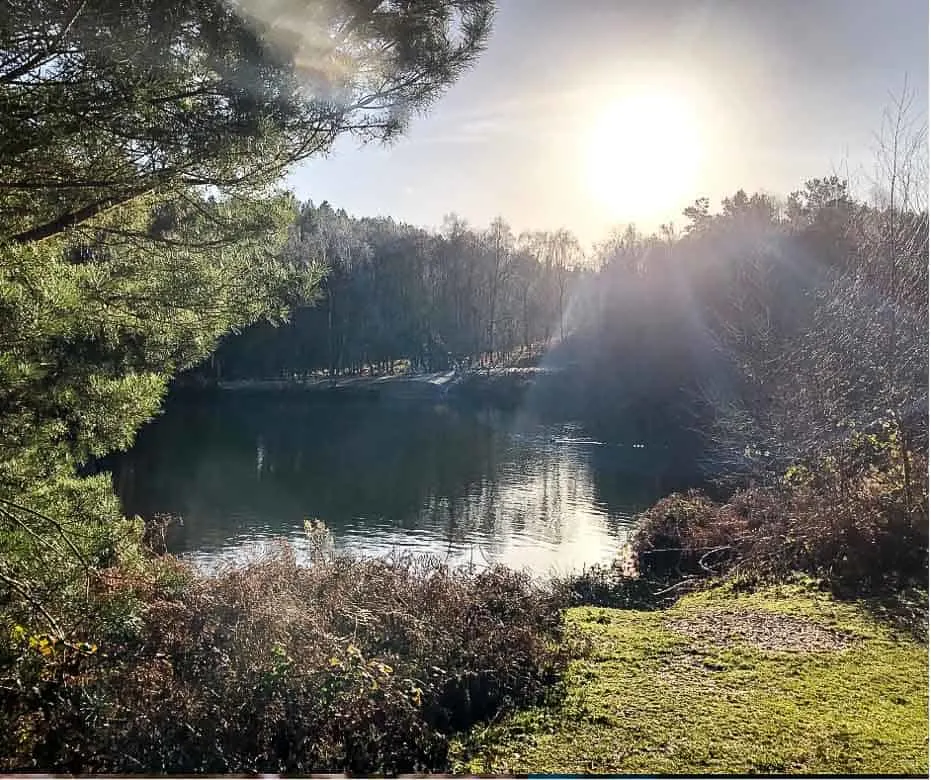 Dartmoor National Park, Devon
Dartmoor National Park, Devon
Buy OS maps for all devices for Great Britain or Ordnance Survey Explorer Paper Maps
Check rates and availability for accommodation in Dartmoor
New Forest
Contributed by Mal at Raw Mal Roams
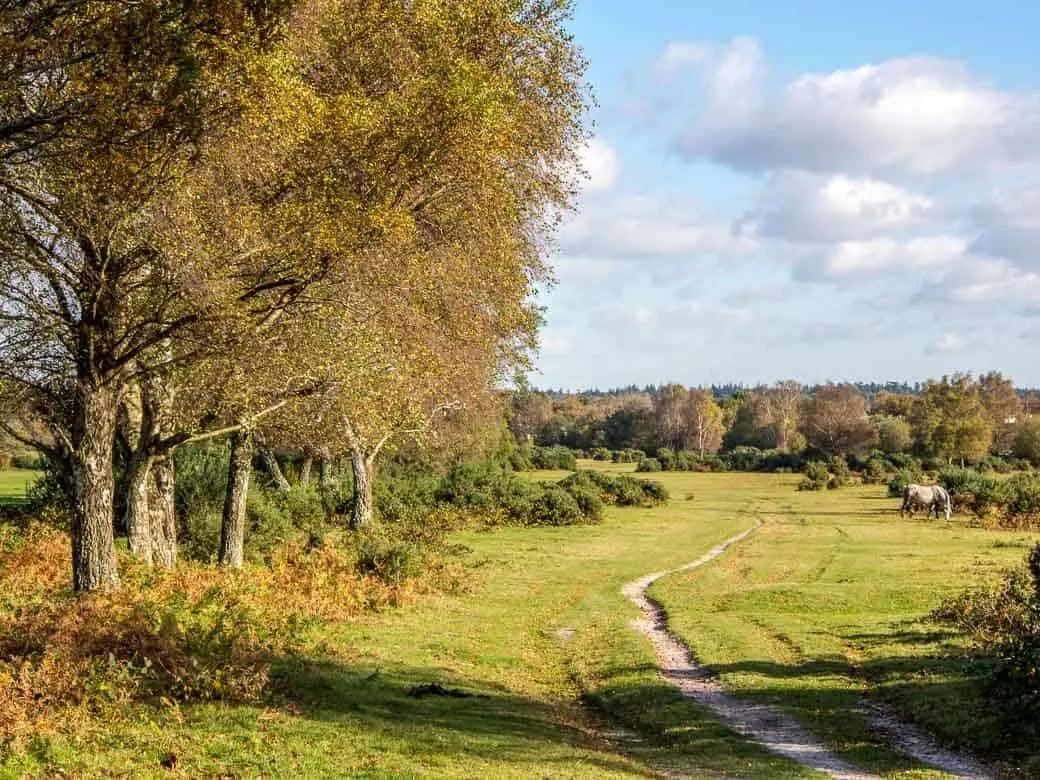 New Forest, National Park in Hampshire
New Forest, National Park in Hampshire
Buy OS maps for all devices for Great Britain or Ordnance Survey Explorer Paper Maps
Check rates and availability for accommodation in the New Forest
South Downs
Contributed by Suzanne from the Travelbunny
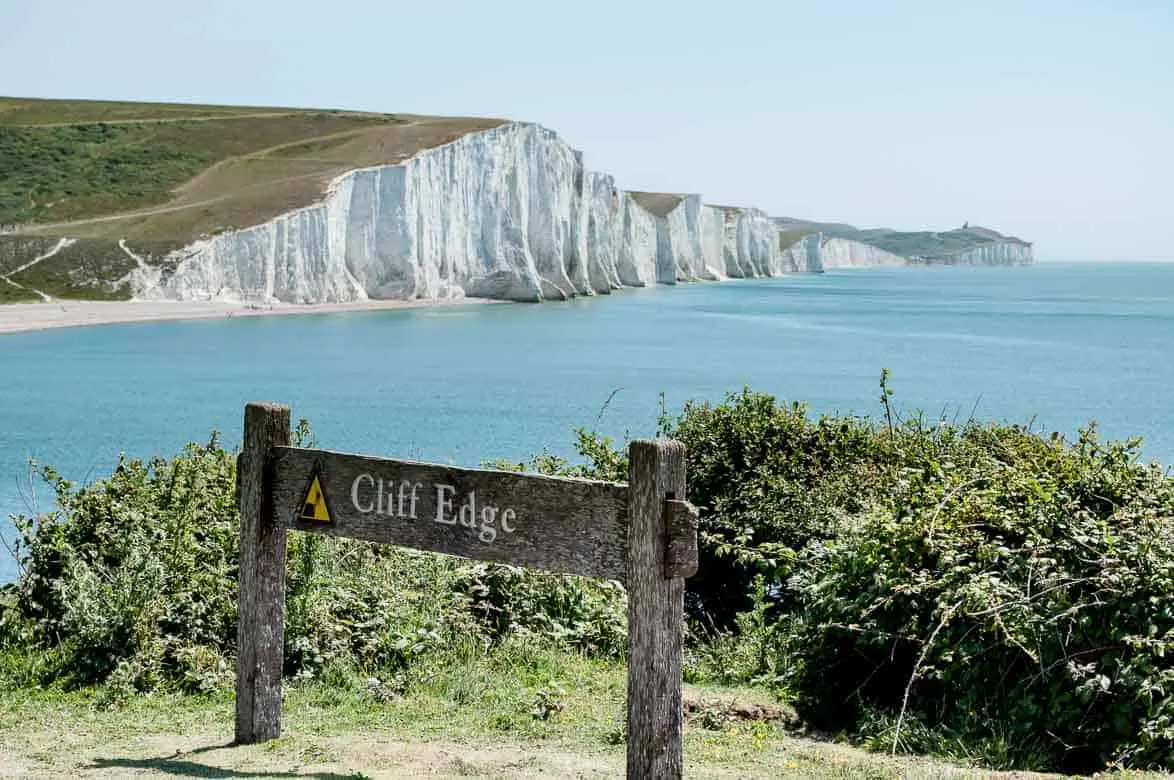 Seven Sisters Cliffs from Seaford Head, East Sussex, South Downs National Park
Seven Sisters Cliffs from Seaford Head, East Sussex, South Downs National Park
The South Downs is the National Park nearest to me and therefore the one I’ve spent the most time in. Just as well because I adore it.
South Downs is the UKs newest National Park and was established in 2011 and is easily accessible from London by train or car in under two hours.
The park stretches 87 Miles (140 km) along England’s south coast from the cathedral city of Winchester in the west to the white chalk cliffs of the Seven Sisters and Beachy Head at Eastbourne in the east. The stunningly beautiful park takes in the counties of Hampshire, West Sussex and East Sussex. Within it you’ll find ancient woodland, chalk grassland, castles, windmills, quaint villages, market towns and vineyards.
There are some beautiful towns along the route so you might want to check out these things to do in Winchester at the start of the South Downs Way. One of the prettiest villages in Sussex, Amberley, is worth stopping at about halfway along the route and then Eastbourne at the end.
Buy OS maps for all devices for Great Britain or Ordnance Survey Explorer Paper Maps
There are many places of interest in the park inluding the South Downs Way, Devil’s Dyke and the Seven Sisters Cliffs near Brighton, Halnaker Tree Tunnel and Kingley Vale in West Sussex. Visit a vineyard for a taste of Sussex Sparkling wine during your visit. I recommend Rathfinny near Alfriston in East Sussex but there are dozens of others to choose from across the counties.
Wildlife and plantlife is abundant in the park. You may hear nightingales or woodpeckers. Look out for 11 types of orchid and 39 species of butterfly. Larger mammals include badgers, weasels, stoats, and roe or fallow deer. We saw a weasel bounding through the grass on our last walk up to Beachy Head.
In 2016 the park was granted International Dark Sky Reserve status, to restrict artificial light pollution above the park.
The South Downs Way was the first bridleway National Trail in England and is the only National Trail to lie entirely within a National Park. If you want to walk the South Downs Way it’ll take 8-9 days to walk the whole 100 miles so perhaps choose a part of it if you want a day hike in the South Downs. If you want to walk the whole route you’ll need to plan your stops and book accommodation ahead of your trip.
-Check rates and availability for accommodation in the South Downs
-Get your Ordnance Survey book of the best walks in the South Downs National Park and East Sussex
So there you have all of the UKs 15 National parks and a National Parks map to help you plan your visit. Each and every park is a beauty in its own right and we are lucky enough to be able to enjoy them whenever we like.
Please remember to leave no trace and to protect our national parks for future generations. The Countryside Code was updated recently so you might want to take a look at the changes.
Have you visited any UK National Parks? Share your favourite park in the comments below and if you’ve enjoyed this post please share on social media or Pinterest. Thank you.
Pin it!
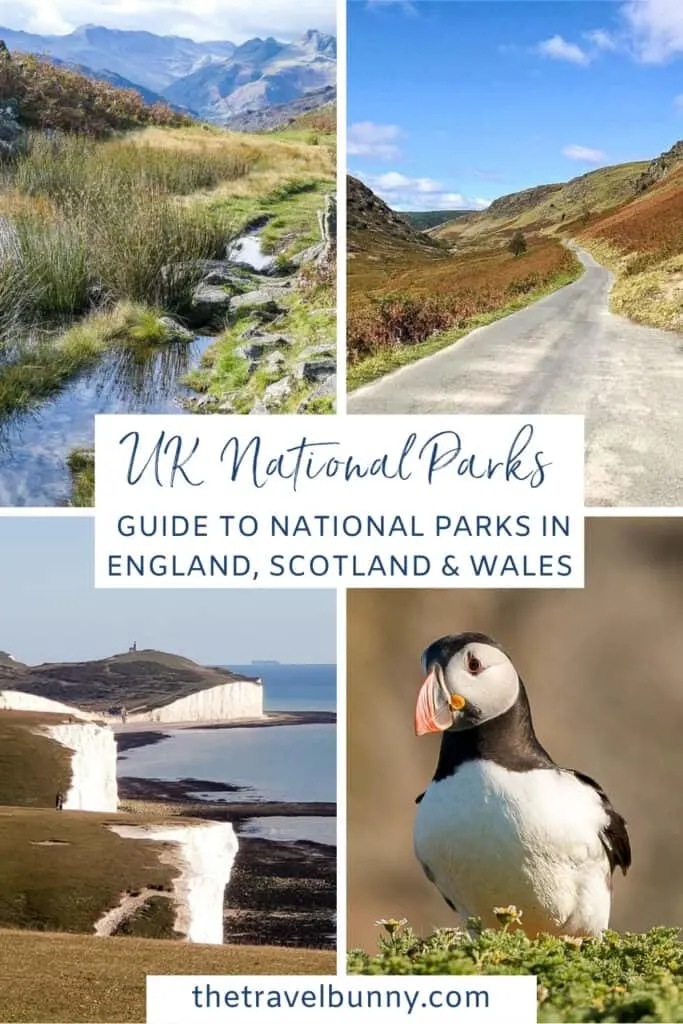
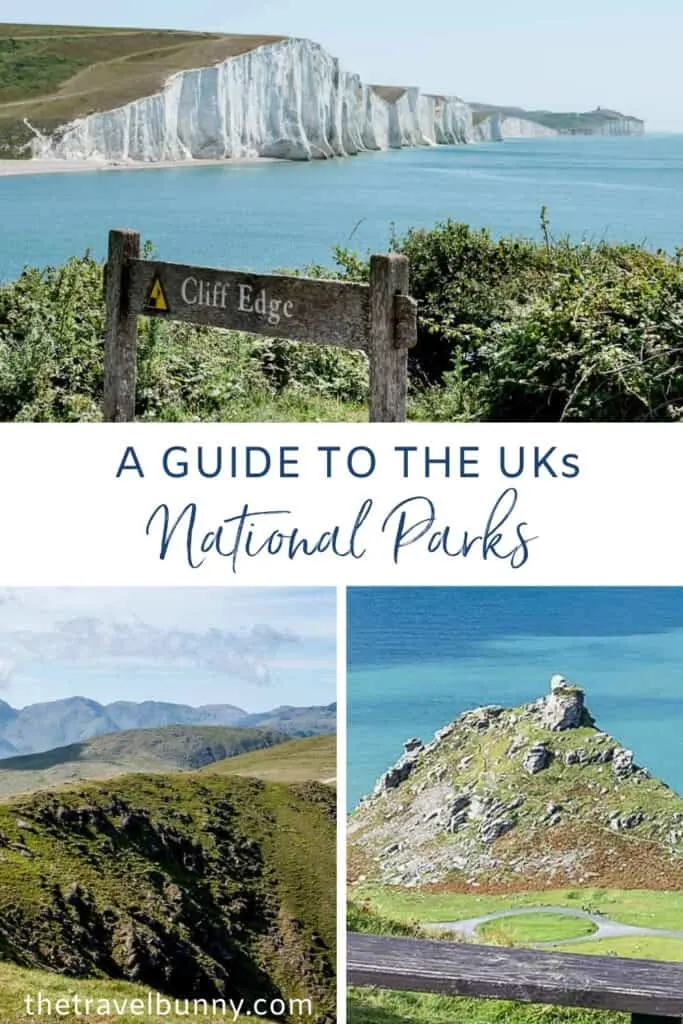

Suzanne Jones is a full-time travel blogger and writer at The Travelbunny which she started in 2011 during her time as a professional travel planner. Suzanne enjoys exploring new destinations, culinary encounters and the outdoors. When not travelling or writing about her adventures you’ll most likely find her, camera in hand, enjoying coastal walks in Sussex.
Suzanne also runs Hello Sussex a website which showcases the best of East & West Sussex. Read more about Suzanne.

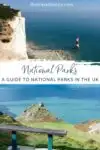

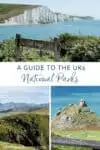
Kevin
Friday 11th of June 2021
I still haven't been to the UK and I really need to schedule a trip once borders fully reopen. These landscapes are absolutely stunning. I am intrigued by the Seven Sisters Cliffs, especially their unique color. But if I had to choose, I would probably aim to do Cairngorms or Snowdonia. I didn't know Wales had such dramatic landscapes!
Suzanne Jones
Tuesday 15th of June 2021
For a small country we have a lot of stunning landscapes. I hope you make it over soon and get to see some of them.
candy
Thursday 10th of June 2021
I usually don't think of visiting a National Park in other countries, but it's something I should really consider on my next trip to England. I love the Puffin! They are super cute and the last time I saw one was in Iceland :)
Suzanne Jones
Tuesday 15th of June 2021
The UK has some stunning National Parks - as you can see. I've never seen a puffin - not even in Iceland! I've been to a few of the parks in the US, all very beautiful.
Tom
Tuesday 8th of June 2021
The UK seems to be one country that puts emphasis on parks, the outdoors, and the right to hike in general, not just the national parks. I've gone hiking in Wales (and Wales is great!) but it's neat to see from your map that there are so many others spread near-evenly throughout the UK, and how neat that the newest one is just 10 years ago. And I never knew Wales had puffins, silly me. Scotland is next for me.
Suzanne Jones
Tuesday 8th of June 2021
We're lucky to have lots of public ways where we can enjoy the countryside. I hiked in Wales last week but not in the area where there are puffins! We're heading to Scotland later this year too.
Linda (LD Holland)
Monday 7th of June 2021
I really never had thought about visiting National Parks in the UK. But it was great to see so many great options to enjoy the outdoors. A great way to travel from north to south from park to park. How fun to add an adventure like a steam train trip as part of the trip. Love the variety in the parks. Definitely should be on our planning board when we get a road trip booked in the UK.
Suzanne Jones
Tuesday 8th of June 2021
I love the idea of exploring all of the parks from north to south! It's good that local heritage and community also play a part in what makes up a UK national park like the steam trains. I hope you enjoy your visits whenyou get your road trip booked.
Jeff
Monday 7th of June 2021
The national parks have a good variety of scenery. I'd love to see some of the animals in the wild (like the puffin). I travelled through the U.K a number of years ago and only visited a couple of these parks. I wish I had done more.
Suzanne Jones
Monday 7th of June 2021
I'd love to see puffins too. We're lucky to have so many national parks in the UK given the size of the country. I've made it my mission to visit more of them!